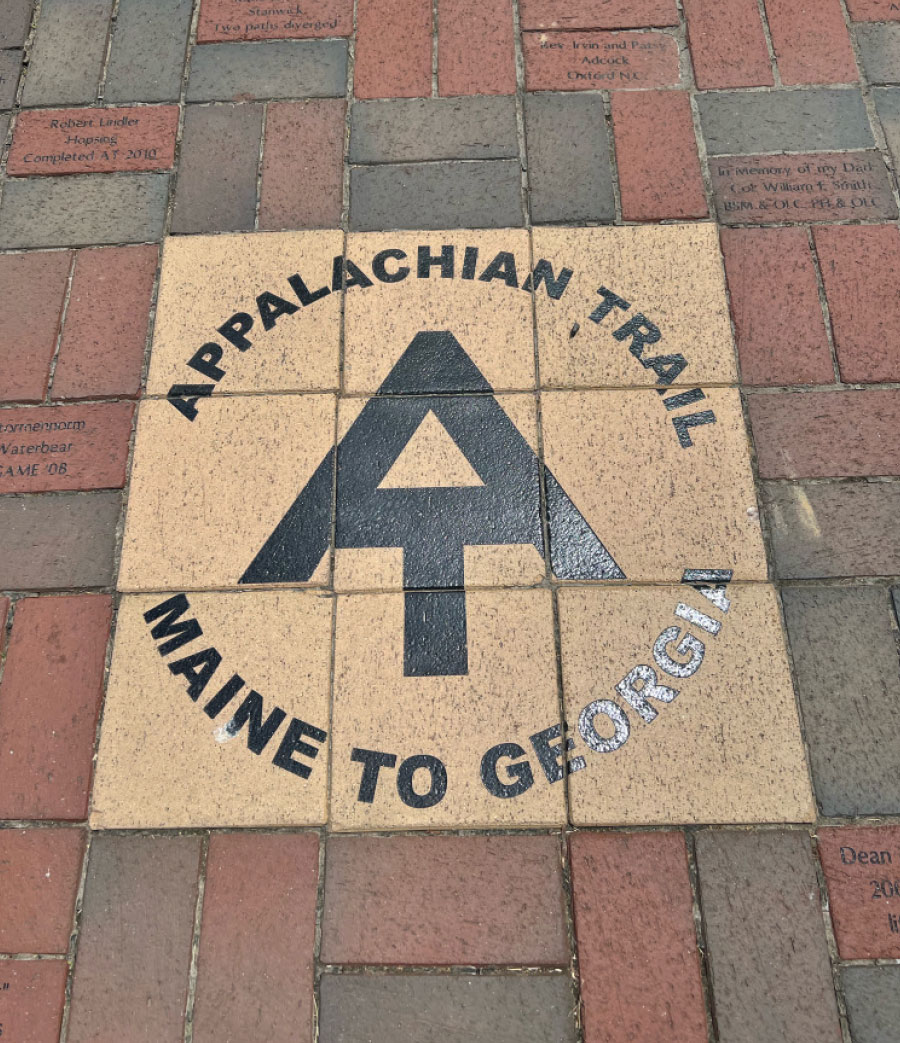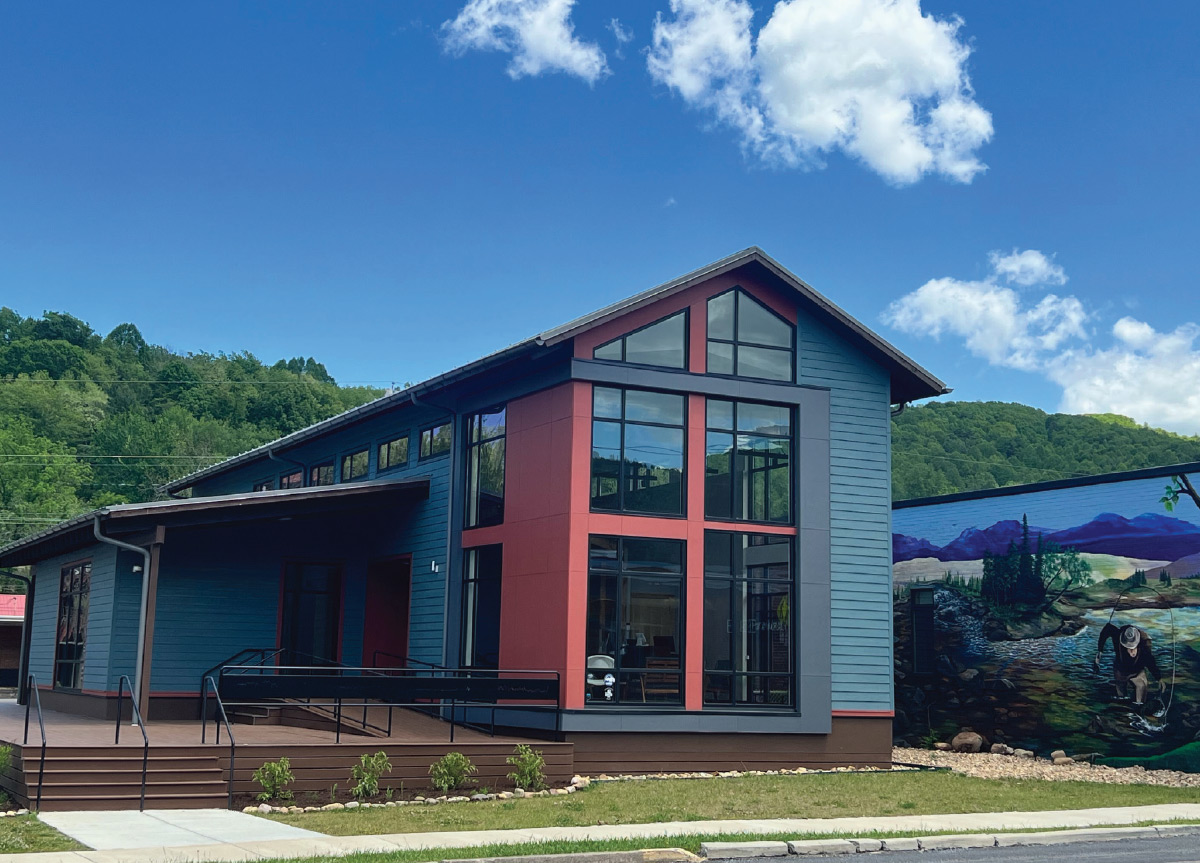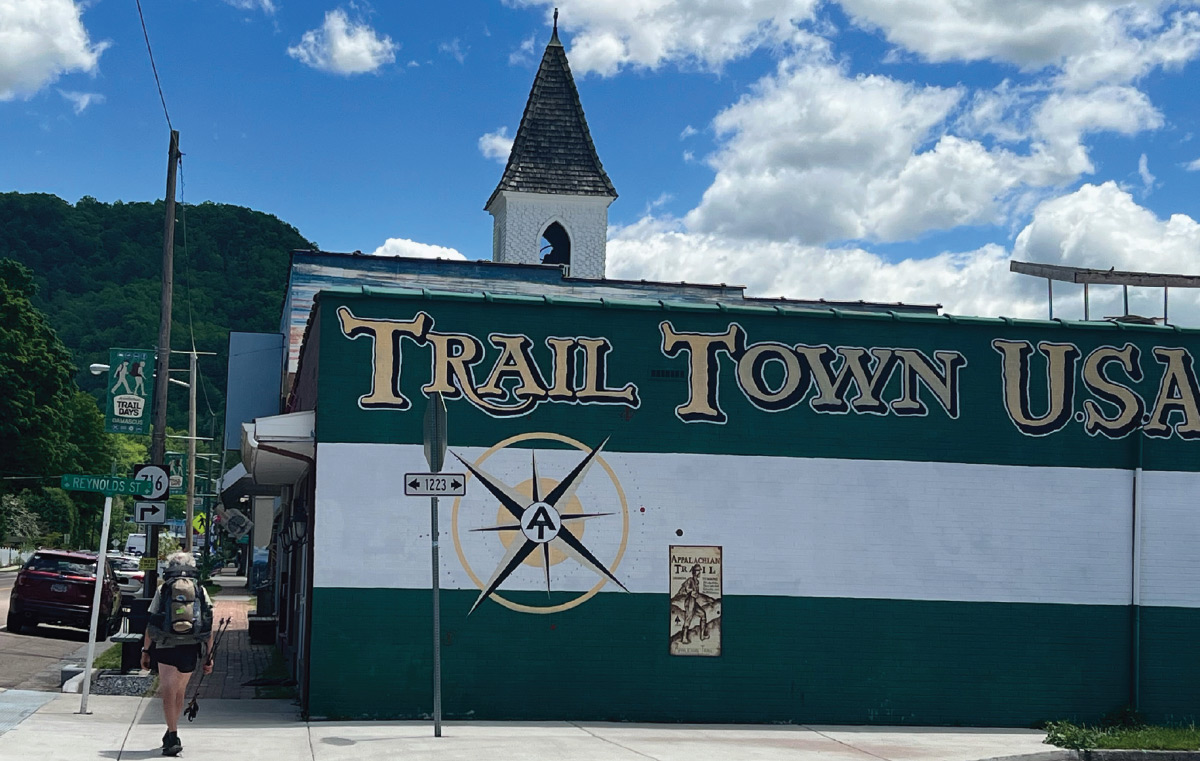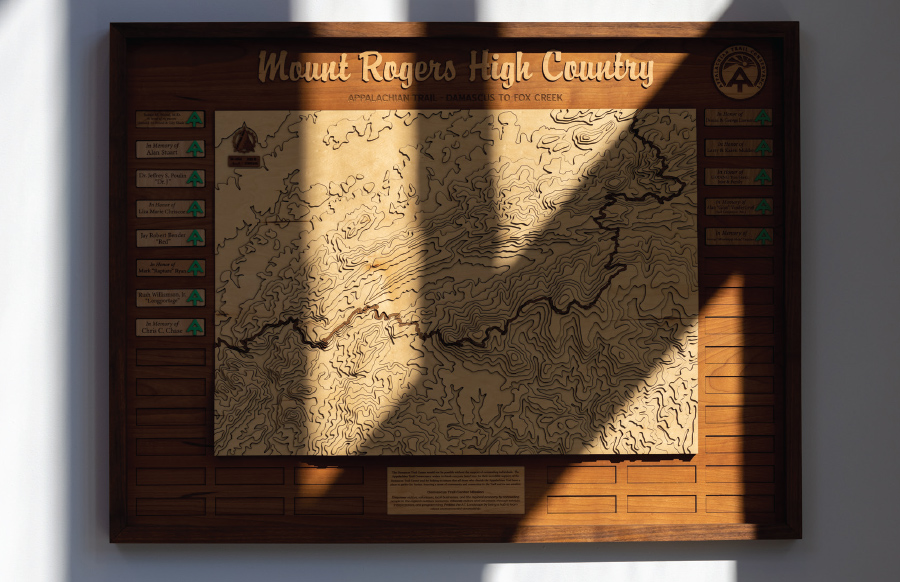
These are just a few of the most common questions asked by people who come through the doors of the newest Appalachian Trail Conservancy (ATC) visitor center — located in the heart of Damascus, Virginia. Visitors hail from as close by as across the nearby Tennessee state line and from as far away as Alaska, Brazil, Germany, and Sweden. In total, more than 1,700 people visited the center in its first six weeks after opening on August 27, 2022.
Upon entering the 2,100-square-foot facility with its soaring floor-to-ceiling windows, visitors not only get their questions answered by knowledgeable ATC staff members and volunteers — they also have an opportunity to explore exhibits about the history of Damascus and the three national trails that converge there: the A.T., the Virginia Creeper Recreational Trail, and the Overmountain Victory Historic Trail.
The Damascus Trail Center serves as the quintessential starting point for a variety of excursions in the region. The spectrum of opportunities available from the centrally-located center also served as the conceptual starting point for a multi-year design process that engaged a multitude of regional partners. The success of those efforts is apparent in the range of questions that visitors ask. At the center, visitors can pick up information about recreation and volunteer opportunities in the region and a map or two before heading out to the outfitters, restaurants, and shops farther down Main Street.
“We saw an opportunity to connect our natural resources with the cash registers at the businesses in town,” says Idalina Walker, director of outreach and partnership at the Friends of Southwest Virginia (SWVA). In 2016, SWVA worked with the Mount Rogers Planning District Commission (MRPDC) to submit a proposal for POWER Initiative funding from the Appalachian Regional Commission. This initiative, whose acronym stands for Partnerships for Opportunity and Workforce and Economic Revitalization, provides grants to Appalachian communities seeking to create more vibrant, diverse, and sustainable economies.
The POWER proposal included a master plan for revitalizing downtown Damascus — of which a purpose-built trail center was the centerpiece. “We wanted to capitalize on our growing reputation for being outdoor recreation-oriented and the friendliest town along the Appalachian Trail,” said Gavin Blevins, who is currently the Damascus town manager and the planning director for the MRPDC. “We sought to create new assets that built on what we know to be innately Damascus.”
The master plan also included a waterfront development project to build a riverwalk and green space adjacent to Laurel Creek, which runs through town, as well as enhancements to wayfinding and connection points with the various trails. The Trail Center provided a much-needed anchor for downtown. “It creates a campus feel and a place for the community to congregate in town, rather than being dispersed across the county,” says Blevins.
A conference room doubling as a classroom off the main exhibition hall in the Trail Center provides a welcoming space for meetings, educational programs, and other community gatherings. A garage on the property is being converted into a workshop where the ATC’s storied Konnarock Trail Crew and the Mount Rogers Appalachian Trail Club store tools and supplies for trail maintenance projects as well as conduct training sessions for volunteers.


“The Visitor Center supports our volunteer engagement efforts by providing a facility for training and partnership events,” notes Andrew Downs, ATC’s senior regional director – South. “It’s also an important communications vehicle for the Conservancy, because it gives us an opportunity to speak directly with visitors to the A.T., to tell them who we are, what we do, and our history that predates the Trail itself.”
ATC staff were responsible for designing the exhibition space, which includes a four- by ten-foot topographical relief map of the Mount Rogers High Country, marked with roadways, parking areas, trails, shelters, and campgrounds. Wall-mounted informational panels, photographs, and historic timelines surround the relief map. An important goal in selecting what to display was conveying that outdoor spaces are welcoming to visitors of all ability levels and degrees of experience.



“The planning process that we followed is one many other communities could adopt,” notes Blevins. Walker adds, “The programmatic aspect is the replicable piece. A beautiful building is a great step, but without programming and community involvement, it would be left out in the water.”
As the ATC approaches its 100th anniversary in 2025, its leadership is thinking strategically about the role of visitor centers up and down the Trail, including its headquarters in Harpers Ferry, West Virginia. Programming needs, partnership opportunities, hiker engagement, and community involvement will all be critical components of the solution envisioned for the next century — a vision that connects everyone to the A.T.